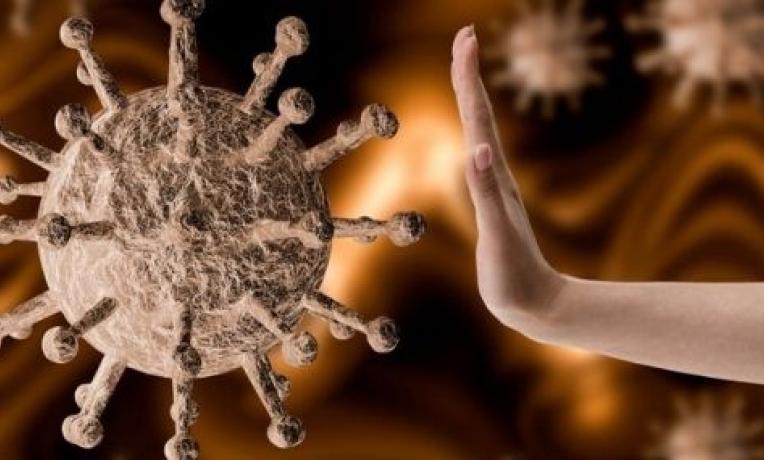
Coronavirus COVID-19, previously named 2019-nCoV, was identified in China at the end of 2019 and is a new strain of coronavirus not previously observed in humans. While the European Commission is working on all fronts to support efforts to tackle the outbreak, we talked to two scientists funded by the European Research Council.
Charlotte Uetrecht, a biochemist specialising in coronaviruses, and Philippe Lemey, an expert in evolutionary and computational virology, explain the science of viruses and epidemics and speak about their EU-funded research.
How is your research relevant to the current COVID-19 epidemic?
Charlotte Uetrecht: What we do is basic research to fundamentally understand how the coronaviruses function. Of course, any insights that we gain could be used in the work on the new outbreak strain. In our lab, we are already looking at some of the proteins of the new virus to potentially transfer our own results to the work on the new virus strain. Other virologists at our Institute are more directly involved in the response to COVID-19.
Philippe Lemey: Our methods of viral evolutionary analysis could be useful to study the origin of this coronavirus. We want to learn how it relates to other members of the Sarbecovirus family that includes the SARS (Severe Acute Respiratory Syndrome) virus. This may help us assess to what extent we are at risk of future emergence of such viruses. We could also design tools to reconstruct the spread of the pathogen in real time. We are keeping track of the accumulating data on COVID-19, and have set up the computational framework to be ready to play a role in tracking the spread of this virus.
Less deadly, more contagious
Is there anything unique about this COVID-19 epidemic?
Philippe Lemey: It is unique considering the new pathogen, which is different from the previous SARS outbreak. This virus has adapted in a different way to humans. Compared to other SARS viruses or MERS (Middle East Respiratory Syndrome) it seems like COVID-19 is less deadly but more transmissible.
Charlotte Uetrecht: The viruses adapt and this adaptation results in a faster spread, better cell entry, better replication, and in many cases this also goes hand in hand with a reduction in the fatality rate. Viruses want to be reproduced. If a virus kills its host too quickly, its reproduction ends and this is not advantageous for a pathogen. Most human coronaviruses were not particularly dangerous and were considered uninteresting. Until SARS in 2003 people looking into coronaviruses had a hard time getting funding, it was simply not considered interesting or relevant. That’s the reason why we know so little about them.
Viruses: the knowledge gap
What would be a knowledge gap in your field of research that we would need to fill to be better equipped to deal with challenges like the coronavirus?
Philippe Lemey: We need a much better understanding of the transmission dynamics and evolution of viruses in their natural reservoirs in general. This is certainly also the case for coronaviruses. It is difficult to assess the risk of the emergence of such viruses, if we do not have a good understanding of how they circulate in different animals and environments. Understanding how an animal virus jumps the species boundaries, and ends up in humans, will help us prepare for future epidemics. Gaining insight into what viruses are circulating in the animal population, will enable us to better understand which of these viruses may emerge in humans and which mutations are required for this to happen. Although current vaccine developments may be specific for COVID-19, the knowledge that we gain in developing these vaccines might help us produce vaccines faster during a future emergency.
Charlotte Uetrecht: What I’d love to see is a method to observe and understand how viruses modify over time and how they change their structures. We could then design molecules that actually stop these virus machineries from functioning. It is not possible today. What we can observe now is a lot of static structures, but we can’t really watch processes and proteins at work. This is really what I would like to see and what I’m striving for in my research. My hope is that we will have fundamental understanding of what is going on when such a virus infects a cell. Then we’ll be able to develop treatments much faster, have less side effects and a broader antiviral capacity against different viral strains. We already have technologies that produce a lot of data, but it’s impossible for a human being to go through everything manually. So, artificial intelligence will become more and more relevant in this area of research.
You probably got a coronavirus before
Coronaviruses have been with us forever. What makes some of them deadly?
Philippe Lemey: It is likely that you contracted a coronavirus at some point in your lives, probably in early in childhood. There are a number of human coronaviruses that cause the common cold. They circulate in human population and are not particularly dangerous. It’s not easy to answer what sets these common-cold viruses apart from more dangerous ones like SARS, MERS or COVID-19. But it basically comes down to how much damage a virus does during replication in human cells. Subtle differences in the efficiency by which viral variants attach to human cells and in the intensity of replication in the cells may impact their virulence. More damage may also allow for other co-infections and hence more severe disease.
Charlotte Uetrecht: This is something we don’t really understand yet. What is known already is that the new strain has a slight variation in its surface protein. Scientists suspect that this is the reason why it can more readily enter our cells and spread more easily. But the spreading is not directly related to deadliness, so there must be other things. SARS and the current coronavirus are very similar, so we are looking at subtle changes that make a difference. We need more research into the biology of these viruses.
Dangerous and elegant
What brought you to this line of research?
Philippe Lemey: I’ve always been fascinated by creatures we can’t see with the naked eye but that nonetheless can have such an impact on us. I entered the field when bioinformatics was on the rise and was intrigued by the possibility of using computational tools to study their genomes, including reconstructing their evolutionary history. I got a taste of this in a short course during my master thesis project, and pursued that interest ever since.
Charlotte Uetrecht: I always loved protein structures, because they look beautiful to me. And I find viruses fascinating. They are built in a very simple fashion. Some only contain three different proteins with one building a shell to protect their genome. And yet they are able to spread from human to human, and make us terribly sick. They are deadly yet somewhat elegant.
Biography
Dr Charlotte Uetrecht heads the junior research group Dynamics of Viral Structures at the Heinrich Pette Institute - Leibniz Institute for Experimental Virology in Hamburg, Germany. With her ERC-funded research she aims to understand how coronaviruses produce new viral particles, how they replicate and function. To do so Dr Uetrecht and her team develop new methods and instruments to look in more detail at the viral structures and their changes, using mass spectrometry.
Prof Philippe Lemey is an expert in evolutionary and computational virology. The goal of his ERC project is twofold. First, to understand how viruses emerge and establish in human populations. Second, to design practical statistical tools to reconstruct the spread of pathogens in ongoing epidemics, based on their genomic data. This has the potential to provide timely information to those managing the response to outbreaks. Prof Lemey and his team are based at KU Leuven in Belgium.
Relevant links:





